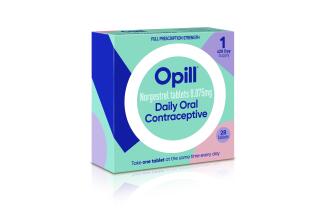The Pill That Liberated Women (and Changed the World) Turns 40
- Share via
The world’s first oral contraceptive celebrates its 40th birthday Tuesday, hitting midlife alongside many baby boomer women who took the pill, freeing them from the fear of pregnancy and allowing them to delay motherhood in order to pursue careers that altered the face of the American workplace.
“The pill was revolutionary for women,” said Dr. Michael Burnhill, a Brooklyn obstetrician and vice president of medical affairs for Planned Parenthood Federation of America. “Until then, women lived lives in terror of pregnancy. The promise of something that you could take by mouth that gave you 99% effectiveness made sliced bread look like nothing at all.”
For physician Felicia Stewart, the pill was life-altering.
“Boy, I could have never gone to medical school if I hadn’t taken the pill,” said Stewart, co-director of the Center for Reproductive Health Research and Policy at UC San Francisco.
Although most think of the pill as an instrument of sexual liberation, Stewart said, it ended up being more than that.
“The pill liberated women sexually, but I think that it has also liberated women from the burdens of biology. . . . I took it for both contraception and for making my period more predictable, less heavy and with less heavy cramps.”
The pill was developed in part to replace more clumsy condoms and diaphragms. And an oral contraceptive appealed to our desire for the quick fix.
“We are a pill-taking culture,” said anthropologist Helen Fisher, author of “The First Sex: The Natural Talents of Women and How They Are Changing the World,” (Random House, 1999). “We believe in pills. I bet a whole lot of girls today have never seen a diaphragm. A lot of women don’t touch their own genitals and would be squeamish about a diaphragm. So you take a pill everyday and you don’t have to think about it.”
After the pill was approved by the Food and Drug Administration in 1960--largely because of the pioneering efforts of Planned Parenthood founder Margaret Sanger--married women came in droves to health clinics to get it. Young women were denied access to it by law until the late 1960s.
“The pill came along at a time when women could use it,” Fisher said. “They were in college instead of the hay wagon. They were entering the job market. And it came in the context of permissiveness and opportunity. For women, the pill was a big step toward the sexuality we always had had.”
Today’s pill has undergone changes, mostly aimed at reducing its early side effects (among them nausea and vomiting). Used correctly, it is still considered the most effective and safe contraceptive method. It contains synthetically produced hormones similar to ones that regulate the menstrual cycle, preventing the ovaries from releasing eggs into the uterus where they might be fertilized.
Despite the early unpleasant side effects, roughly 80% of U.S. women born since 1945 have taken the pill during their lifetime, Stewart said. A majority of U.S. 20-something women and 44% of teenage girls used the pill in 1995, according to the Alan Guttmacher Institute, a nonprofit reproductive health research organization.
“A growing number of young women are using the pill plus condoms to protect themselves against STDs,” Stewart said.
If there were any doubt that the pill was one of the most significant innovations of the 20th century, Bernard Asbell, author of “The Pill: A Biography of the Drug that Changed the World” (Random House, 1995), wrote that we should consider this: “To identify this extraordinary drug among the thousands of potions, powders, capsules, caplets, tablets and nostrums for sale at any pharmacy anywhere, all you need to do is spell the word ‘pill’ with a capital P.”
Birds & Bees runs weekly. Kathleen Kelleher can be reached at kellehr@gte.net.






